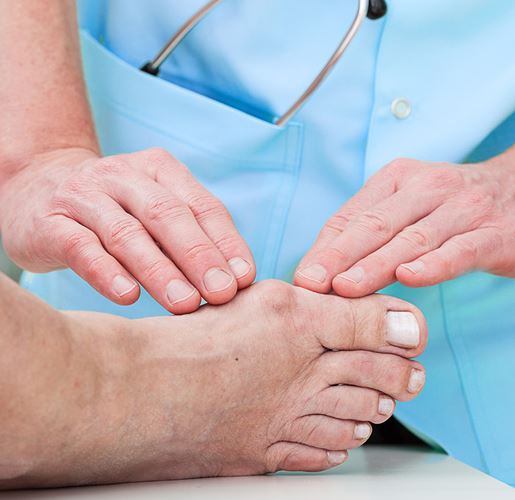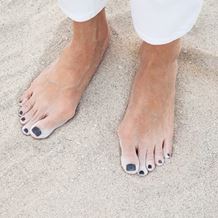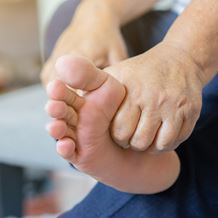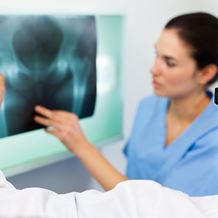Bunions
What is a bunion?
A bunion, also referred to as hallux valgus, is a visible bony lump that grows on the joint at the base of the big toe. Bunions can also present on the outside of the little toe, and this is known as a Tailor’s bunion or bunionette. Bunions usually develop slowly over time and are exacerbated by pressure placed on the big toe joint. This causes the big toe to lean inwards towards the second toe, changing the normal alignment of the bones, tendons and ligaments.
Bunions often result in an obvious visual deformity accompanied by painful symptoms such as inflamed skin, toe misalignment, stiff toe joints and persistent foot pain. Normal shoe wear becomes uncomfortable, walking becomes painful, and movement can become increasingly limited. As the bunion worsens it can impact the other toes causing related conditions such as hammer toe and calluses. Bunions are usually caused by narrow or tight footwear, or disease such as arthritis. Some foot-shapes are more likely to be more vulnerable to developing bunions simply as a result of their inherent biological shape and structure.
How are they treated?
Once your doctor has examined your feet and confirmed the condition, bunions are usually treated using conservative options such as wide-toe shoes, toe spacers, padded soles or bunion correctors. You can also take pain relief to help with the symptoms. If you have spent a lot of time on your feet, applying ice can help with the swelling.
If your bunion causes ongoing pain that continues to interfere with your daily activities and doesn’t respond to treatment, your doctor may recommend bunion surgery as a suitable option. A bunionectomy will remove the actual bunion and correct the position of the big toe. In more severe cases, the damaged joint can be replaced with screws or pins to align the bone so that it naturally fuses together.
How long do they last?
Bunions won’t go away without treatment. But while they cannot be shrunk, there are a few measures you can take to help prevent them getting worse:
- Wear comfortable footwear with a wide toe box.
- Manage your weight to reduce pressure on your bunions.
- Orthotics can help support your foot structure.
- Protect your bunion with in-shoe padding.

Other foot surgeries and procedures
- Bunion surgery
- Plantar Fasciitis surgery
- Hammer Toe surgery
- Flat Foot Surgery
- Foot Fusion surgery
- Neurectomy Foot surgery
Common foot conditions
Find a hospital with orthopaedic services
Our Hospitals
Related services

Bunion Surgery
A common medical procedure to treat bunions that cause ongoing painful symptoms.
Read More
Other Foot Surgeries and Procedures
Procedures for foot conditions such as plantar fasciitis and hammer toe surgery.
Read More
Find a Specialist
Talk to our world-leading orthopaedic specialists about the most suitable treatment options.
Read More